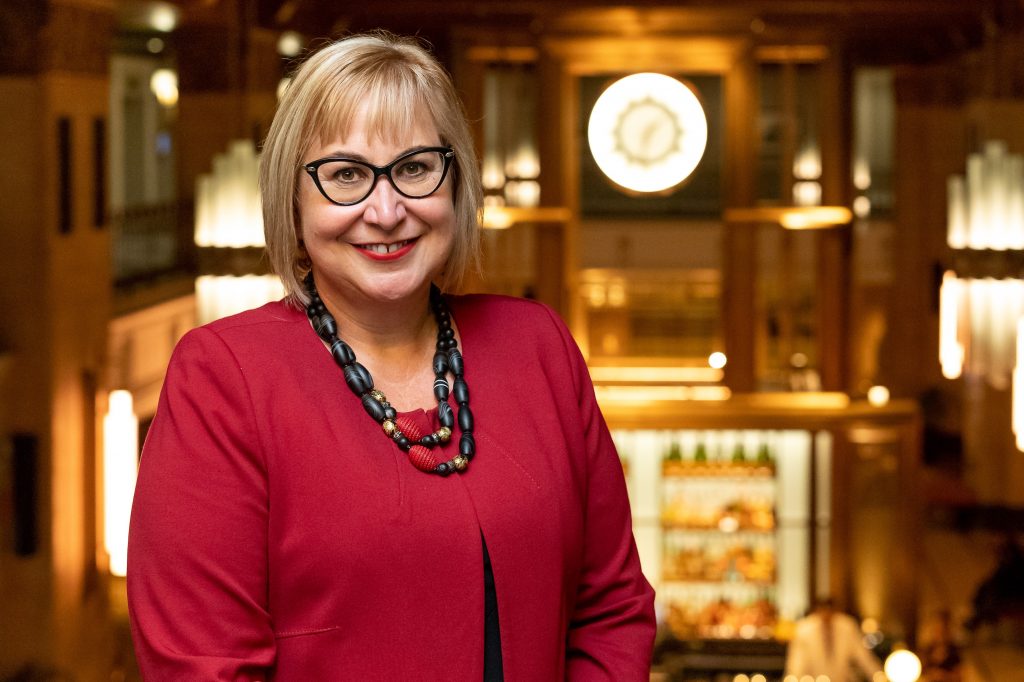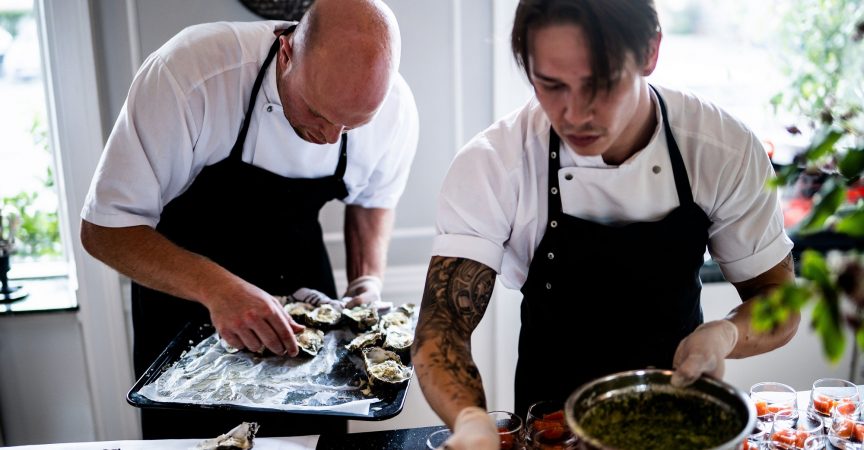How to Diversify & Thrive in the Foodservice Industry: Diversifying Your People
We previously took a look at how to diversify your business and explore multiple profit avenues. With the rise of ghost kitchens, and expansion into food trucks and retails, the opportunities to thrive in 2020 (and beyond) are plentiful for foodservice. This week, we’re tackling the labour issue in restaurant operations.
Understanding how to diversify your business model and food offerings to allow for an overall positive customer experience; however, it all depends on one thing: the ability to staff your operation.
Shifting demographics have exacerbated labour shortages in Canada, and this is now one of the greatest challenges currently facing the foodservice industry. This not only has an impact on the customers’ experience but also on the bottom line.
Bruce McAdams is associate professor for the School of Hospitality, Food, and Tourism Management at University of Guelph. He feels that the reason labour issues are so prevalent in today’s foodservice industry is that not much has changed over the last 30 years. “When I graduated in 1998 and went to work at a restaurant chain, we used the same employment model back then as most restaurants do now. We hired people a certain way, and they worked certain hours and the model hasn’t changed very much, but the world has changed a lot. Demographics show we do not have the young workforce we used to have; there’s been a substantial increase in mental health challenges within the foodservice workplace, a seeming decline in people wanting to work in the service industry and of course the seasonality of the business.”

Bruce McAdams is associate professor for the School of Hospitality, Food, and Tourism Management at University of Guelph
McAdams currently spends his time focused on researching and developing sustainable restaurants and sustainable employment models. He will be part of a panel at RC Show 2020 — Addressing the Labour Crisis: How to Attract and Retain Talent. He warns that the solution is not simple. “It’s an incredibly complex problem that cannot be solved easily, and so I honestly feel that we avoid it because we have a lot of things to worry about in our industry, and this is not a fun one. It takes time, and it takes dealing with people.”
Anna Chartres, also a part of the Addressing the Labour Crisis: How to Attract and Retain Talent Panel at RC Show 2020 is the regional director of Talent and Culture Central Canada for The Fairmont Royal York and her role is to manage staff and their workplace happiness. The Fairmont Royal York sees less than 10 per cent turnover on an annual basis. “Employee engagement is one of the biggest things you can do to drive revenue. It’s the number one thing we are focused on, and it’s not just a human resources thing, my job is to help create the culture of the hotel.”

regional director of Talent and Culture Central Canada for Fairmont Royal York
Each year all the Fairmont hotels participate in an engagement survey to help the leadership team identify the key drivers of engagement. “We sit down with our colleagues and ask what’s bugging you? Then we take the feedback, and when we get the results we action plan what we can improve on in the department. It’s the basis of everything we do,” she says.
McAdams agrees: “All the studies show with an increase in employee engagement, productivity increases, retention increases and customer focus increases. There is a relationship between higher employee engagement and profitability.”
Retention is another key strategy that McAdams focuses on through his studies. “Many of the restaurants I work with don’t have any retention programs as part of their employment strategy.” He explains that in the foodservice business, there are two markets: the external market which is the customers, and the internal labour market, which is the employees. “What we do as an industry is spend all our time and attention on the external market, we spend marketing dollars, focus on competitive advantage differentiation and we do nothing in the internal market for labour, or it falls to an under-resourced HR department.”
As part of his sustainability work, McAdams is exploring the concept of alternative work schedules as part of retention strategies. “If we look at management schedules now, less than five per cent of organizations have alternative work schedules, and it’s been proven that employees stay with companies that have the most flexibility in their schedules.” This can be difficult in the traditional restaurant model where long hours and odd days are the norms, however this is what employees are demanding. McAdams ran a study asking 350 students in Ontario studying to be a chef or work in the restaurant management industry, what schedules they would like to work, and the overwhelming response was a four, 10-hour day work week.
But what about small business owners who don’t necessarily have the infrastructure to develop a robust retention program? According to Chartres from The Fairmont Royal York, “It’s about creating the infrastructure. If you treat your people well, you don’t have to have a big sophisticated organization behind you. If you sit down and listen to what your employees need, that’s the first step of the equation. Too often, we don’t. If you take care of people, they will be more loyal to you.”
Court Desautels, also part of the labour panel at RC Show 2020, and the president of the Neighbourhood Group of Companies, one of a handful of certified B Corporations in Canada, has embraced the challenge of finding new and innovative ways to take care of the people who work for his restaurant group. His vision of combining great hospitality with environmental and social initiatives has led him to challenge the status quo in the traditional restaurant business model. “The status quo just doesn’t work anymore. We have a stigma to break down and show that we can operate like any other business,” says Desautels.

Court Desautels, president of the Neighbourhood Group of Companies
He has introduced health benefits to all full-time employees and redefined what full-time hours are—20 hours—to enable as many employees as possible to take advantage of the program. He reviews his attrition rates often to see how it correlates with the number of employees on benefits. “The higher the percentage of employees on health benefits, the lower the attrition rates,” he says. “And low attrition rates leads to increase sales and increase profitability. All senior managers in his restaurants receive four weeks of vacation to start, and he also offers all employees access to a health and wellness program, an educational fund to develop themselves personally or professionally and an emergency fund. For those who travel long distances on public transportation, he supplies bus passes. “You treat your employees well, you retain your employees, they stick around for the long haul, and you build a strong team,’ he says.
Taking care of people also includes ensuring the culture of the restaurant supports the needs of the employees. Dean Sockett, another member of RC Show 2020 labour panel and vice president of People and Culture for Keg Restaurants Ltd, began his career at the Keg as a server during his university years. After graduating, he stayed on at The Keg as a bartender until the company “approached me about becoming a manager. They asked me to try it for one year. I have been here for 40 years now, and I am not a unique story in the company.” He is focused on creating and delivering a superior service culture with highly-engaged employees, and for the past 16 consecutive years Keg Restaurants has been recognized as one of the “50 Best Employers in Canada” by Aon Hewitt.

Providing professional training and development opportunities, the ability to be promoted from within to leadership roles and having leaders that will support those aspirations is a key component to the Keg’s success. “Most of the leadership team has worked at a Keg restaurant, so they understand what our employees are experiencing on the front line.” One of the areas The Keg has spent a lot of time focusing on is mental health within the workplace. “We provide training opportunities, so our managers are able to recognize and deal with an employee who may be experiencing mental health challenges. Ensuring employees feel safe in their environment is of the utmost importance to us.”
In addition to the internal challenges faced by the restaurant industry, there are many external factors such as changing demographics within the workforce that put a huge amount of pressure on restaurants and their ability to maintain a robust staff.
“Twenty years ago I had a stack of resumes to go through when hiring,” says McAdams, “and now I’m dealing with companies that are coming to see me because there’s no stack of resumes, they don’t have 10 people waiting to call when they have a vacancy.” Even if restaurants offer a strong leadership culture and attractive benefits and retention plans, often, people are not interested in working long and odd hours. The daily demands of day to day life take precedent, making it difficult for potential employees to commit to the distinctive requirements of the restaurant industry.
Whether it’s culture, leadership, retention strategies or tackling constantly changing external forces, the road to overcoming labour shortages is complex and will require focus and dedication.









